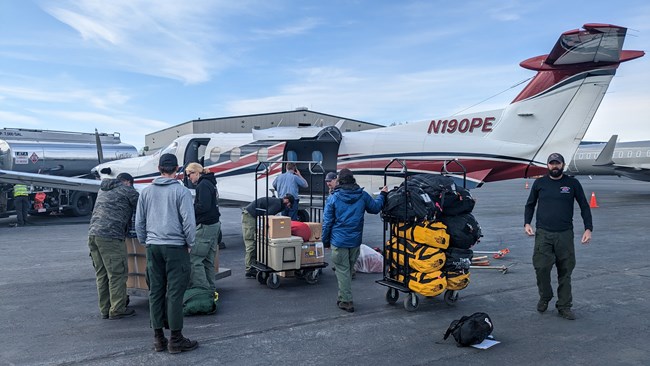Last updated: September 28, 2023
Article
Collaboration leads to successful fuels projects in Lake Clark National Park & Preserve

Bradley Hagstrom, NPS
In late May/early June 2023, four members of a Western Area Fire Management team in Alaska were joined by three fire staff from Buffalo National River in Arkansas, in NPS’s Midwest Region, and one from Great Smokey National Park in NPS’s Eastern Region, to work on fuels projects at Lake Clark National Park & Preserve.
Using Bipartisan Infrastructure Law funding, fire staff completed important fuels projects at five different sites, totaling close to 30 acres.

Bradley Hagstrom, NPS

Matt Koller, NPS
The fire module finished work on a fuels break at Port Alsworth which had been partially done in 2015-2016 and added to the size of the break. This will significantly reduce risk infrastructure in the park, including the visitor center, park headquarters, and employee housing, as well as some private homes in Port Alsworth in the event of a future wildfire. Again, due to the remote nature of the park, providing this extra layer of protection is crucial to reduce risk in the event of a future wildfire in the area.
Staff conducted fuel (vegetation) treatments at two established public use cabins, the Joe Thompson and Priest Rock cabins. Both of these cabins are frequently used throughout the summer, and with the reduced risk to loss due to wildfire provided to the cabins by this work, fire staff have increased the likelihood that the cabins will be around for many years for future generations to use when visiting and recreating in Lake Clark National Park & Preserve.
And finally, staff conducted fuels mitigation around the Tanalian Point day use area, a brand-new property that will be made into a small campground. The area was previously densely forested, and the fuels reduction work will allow for development of the camping area in a manner that increases public safety through reducing risk from future fires.

Matt Koller, NPS

Matt Koller, NPS
